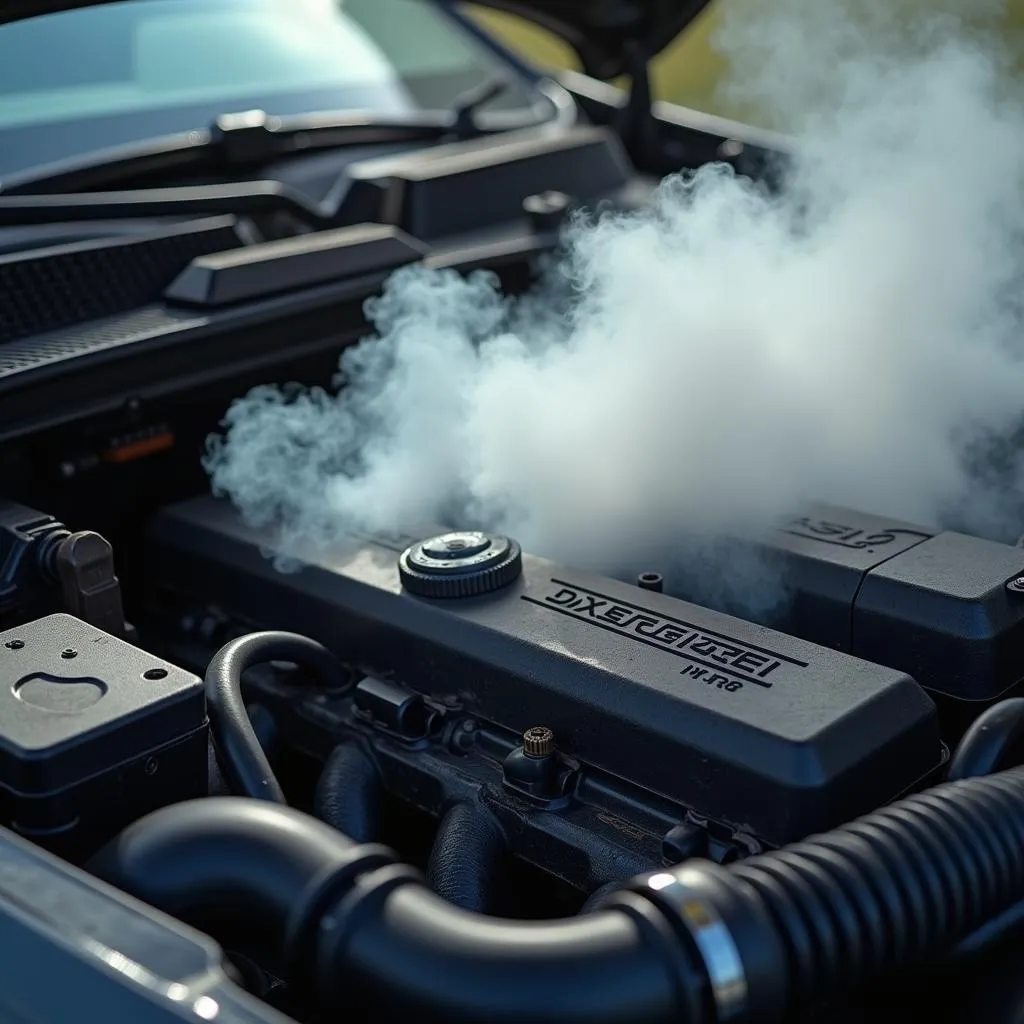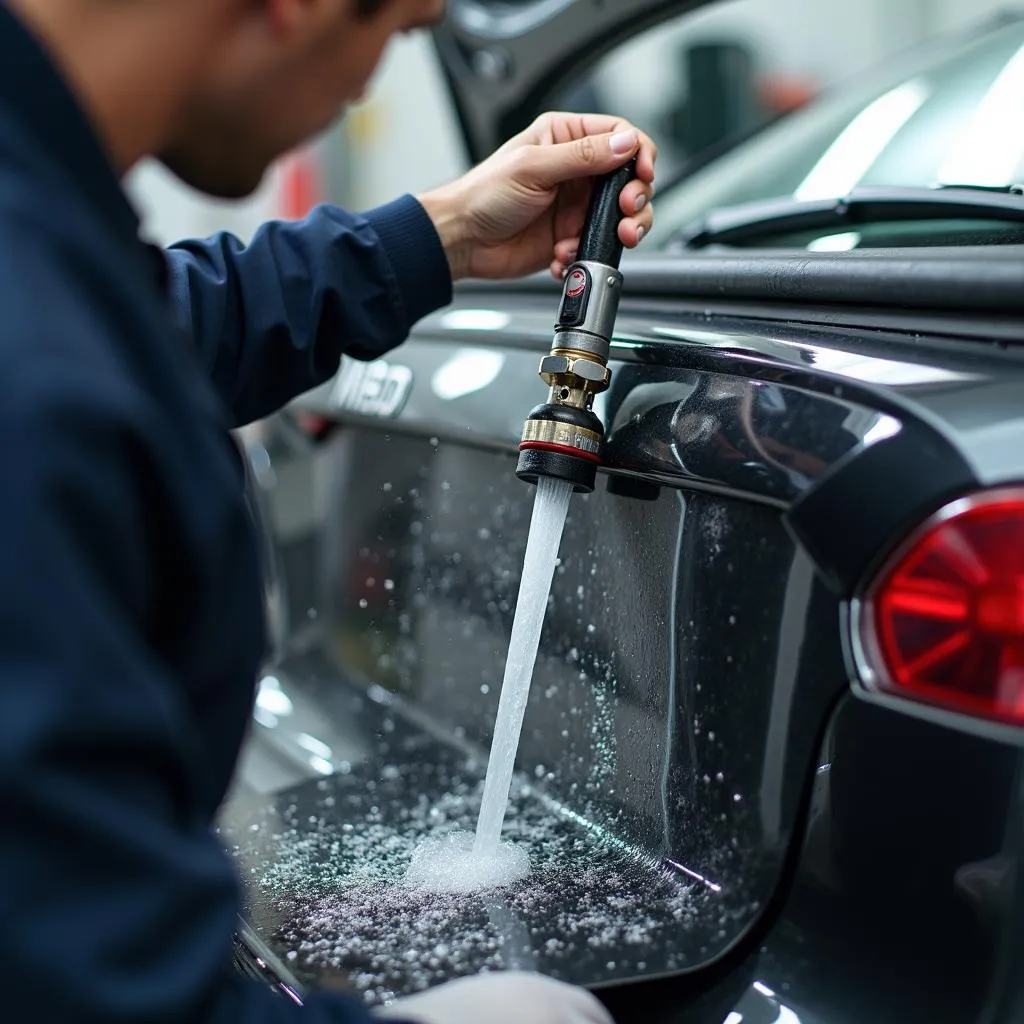Choosing the right coolant for your vehicle might seem like a minor detail, but it can significantly impact your engine’s health and longevity. One of the most common questions car owners have is: “What color coolant should I use?” The answer, however, isn’t as simple as matching colors.
 Various engine coolant types
Various engine coolant types
While color can be a helpful indicator, it’s crucial to understand that coolant color is not standardized across manufacturers. This means a green coolant from one brand might have a completely different chemical composition than a green coolant from another. Using the wrong type of coolant can lead to corrosion, overheating, and costly repairs.
Decoding the Rainbow: Understanding Coolant Types
Instead of focusing on color, it’s essential to determine the correct coolant technology for your vehicle. Here’s a breakdown of the most common types:
-
IAT (Inorganic Acid Technology): This is the oldest type of coolant, typically green or blue-green. IAT coolants are usually less expensive but have a shorter lifespan (around 2 years or 30,000 miles).
-
OAT (Organic Acid Technology): Known for their longer lifespan (up to 5 years or 150,000 miles), OAT coolants often come in orange, red, or dark green. They use a different type of corrosion inhibitor than IAT coolants.
-
HOAT (Hybrid Organic Acid Technology): As the name suggests, HOAT coolants combine elements of both IAT and OAT technologies. They typically come in yellow, pink, or blue and offer good corrosion protection with a moderate lifespan (around 5 years or 100,000 miles).
-
Si-OAT (Silicated Organic Acid Technology): This newer technology is often used by European manufacturers. Si-OAT coolants can come in a variety of colors, including purple, blue, or pink, and they typically have an extended lifespan.
 Engine overheating from incorrect coolant
Engine overheating from incorrect coolant
Finding the Right Coolant for Your Car
The best way to determine the correct coolant for your vehicle is to consult your owner’s manual. It will specify the recommended coolant type and color. You can also find this information on the coolant reservoir cap or by contacting your car manufacturer’s dealership.
Here are some examples of coolant colors used by popular car brands:
- What color coolant does Ford use? Ford primarily uses a distinctive gold-colored coolant.
- What color is BMW coolant? BMW typically uses a blue or sometimes a clear-blue coolant.
- What color is Subaru coolant? Subaru generally opts for a green-colored coolant.
It’s important to note that these are just general guidelines. Always verify the recommended coolant type and color for your specific vehicle model and year.
Mixing Coolants: A Recipe for Disaster
“Can I mix different colored coolants?” This is a question often asked, and the answer is a resounding NO.
Mixing coolants, even if they share a similar color, can be detrimental to your engine. Different coolant technologies use different additives that may not be compatible. Mixing them can result in:
- Reduced corrosion protection: The additives in one coolant can interfere with those in another, compromising the overall corrosion protection for your engine.
- Gel formation: In some cases, mixing incompatible coolants can lead to a gel-like substance forming in your cooling system, hindering proper coolant flow.
 Car coolant system being flushed by a mechanic
Car coolant system being flushed by a mechanic
Keeping Your Cool: Coolant Maintenance Tips
- Check Your Coolant Regularly: Refer to your owner’s manual for recommended coolant check intervals. Look for any discoloration or debris in the coolant.
- Flush Your Coolant System: Follow the manufacturer’s recommendations for coolant flush intervals (typically every 2 to 5 years, depending on the coolant type).
- Use Distilled Water for Top-Ups: If you need to add coolant, use a 50/50 mixture of the correct coolant and distilled water.
Conclusion
Choosing the right coolant is crucial for maintaining your engine’s health and preventing costly repairs. While color can provide a clue, always consult your owner’s manual or a trusted mechanic to confirm the correct coolant type for your vehicle. Remember, never mix different types of coolant, and always prioritize regular coolant maintenance.

